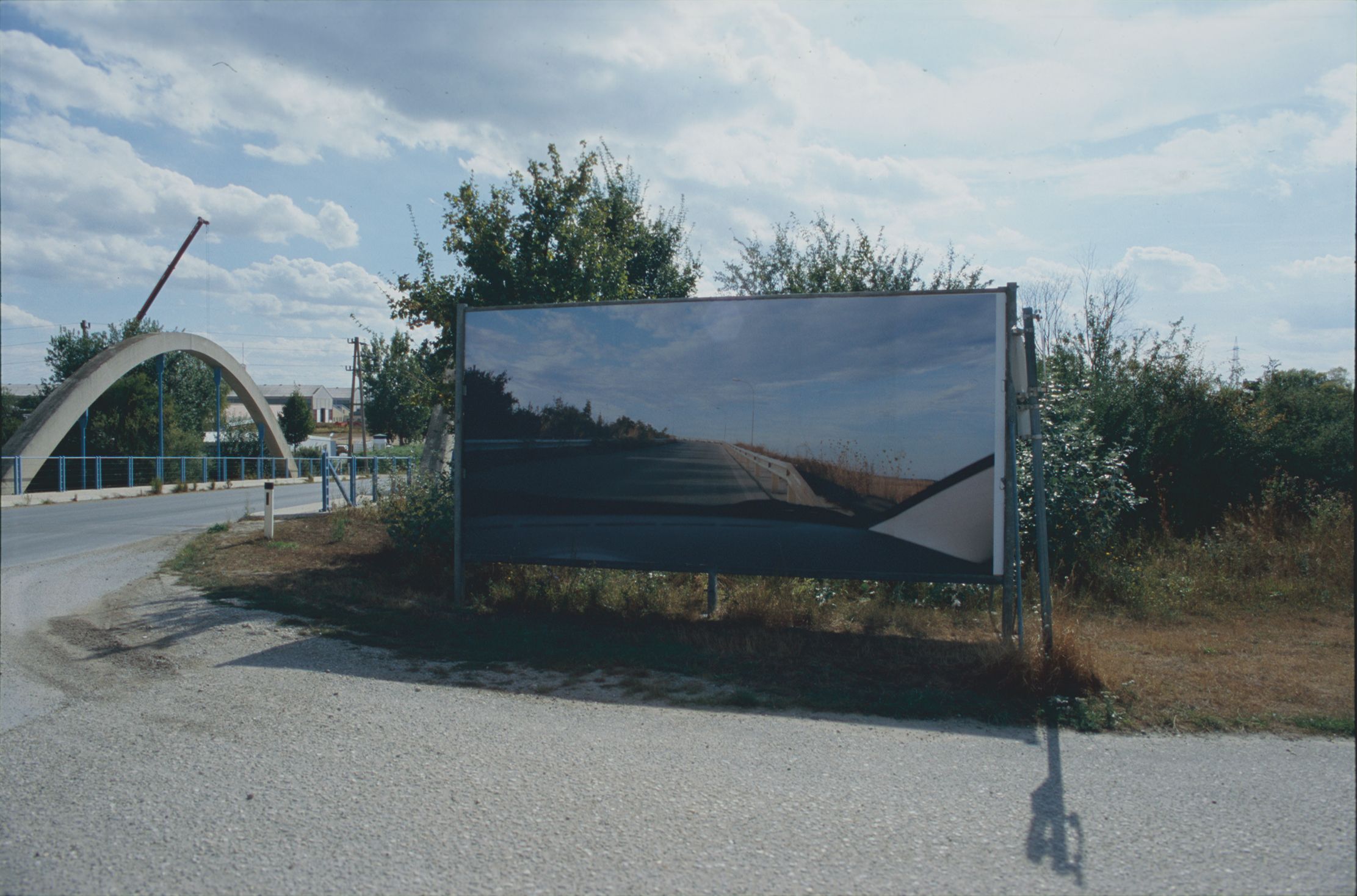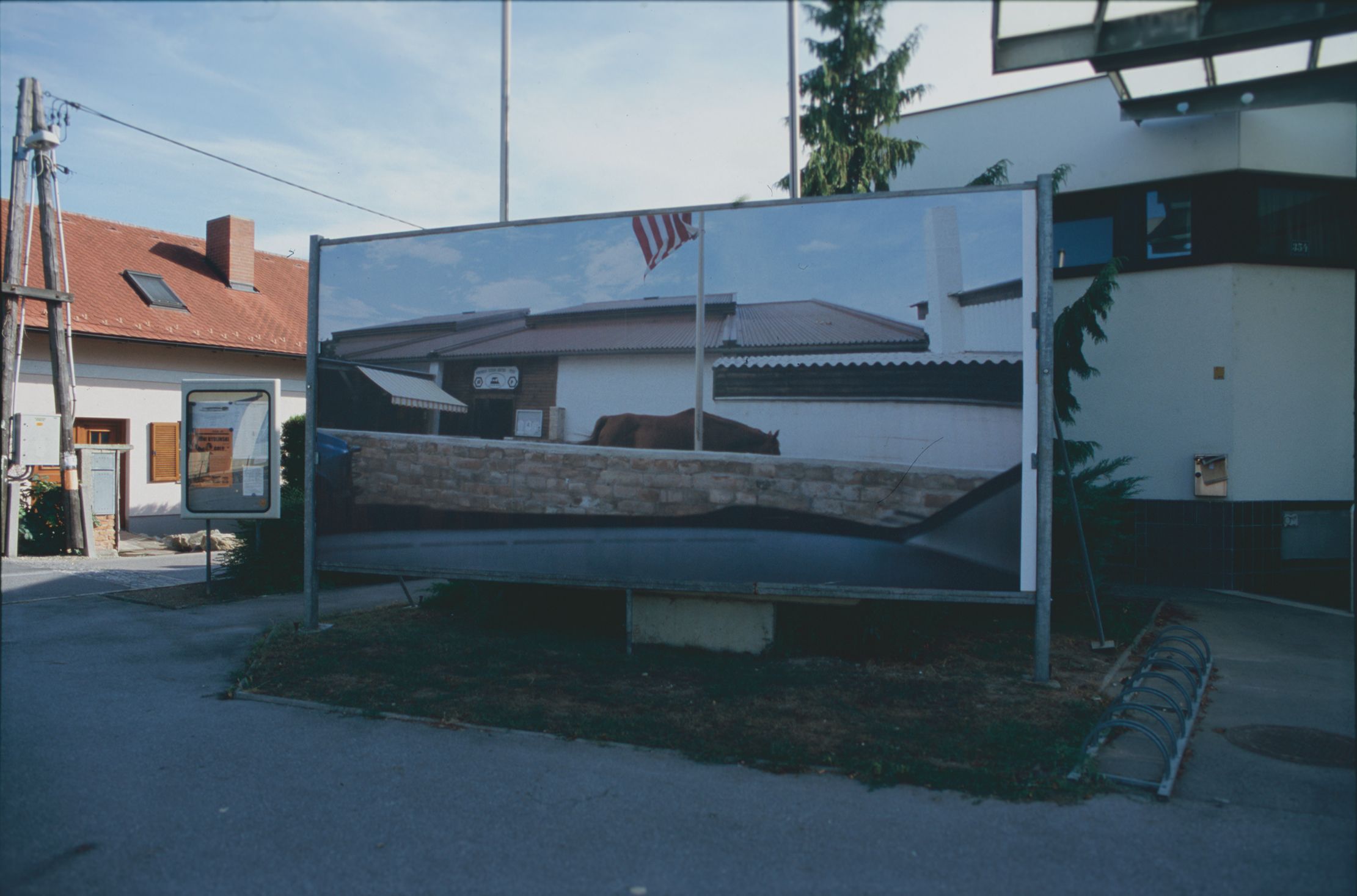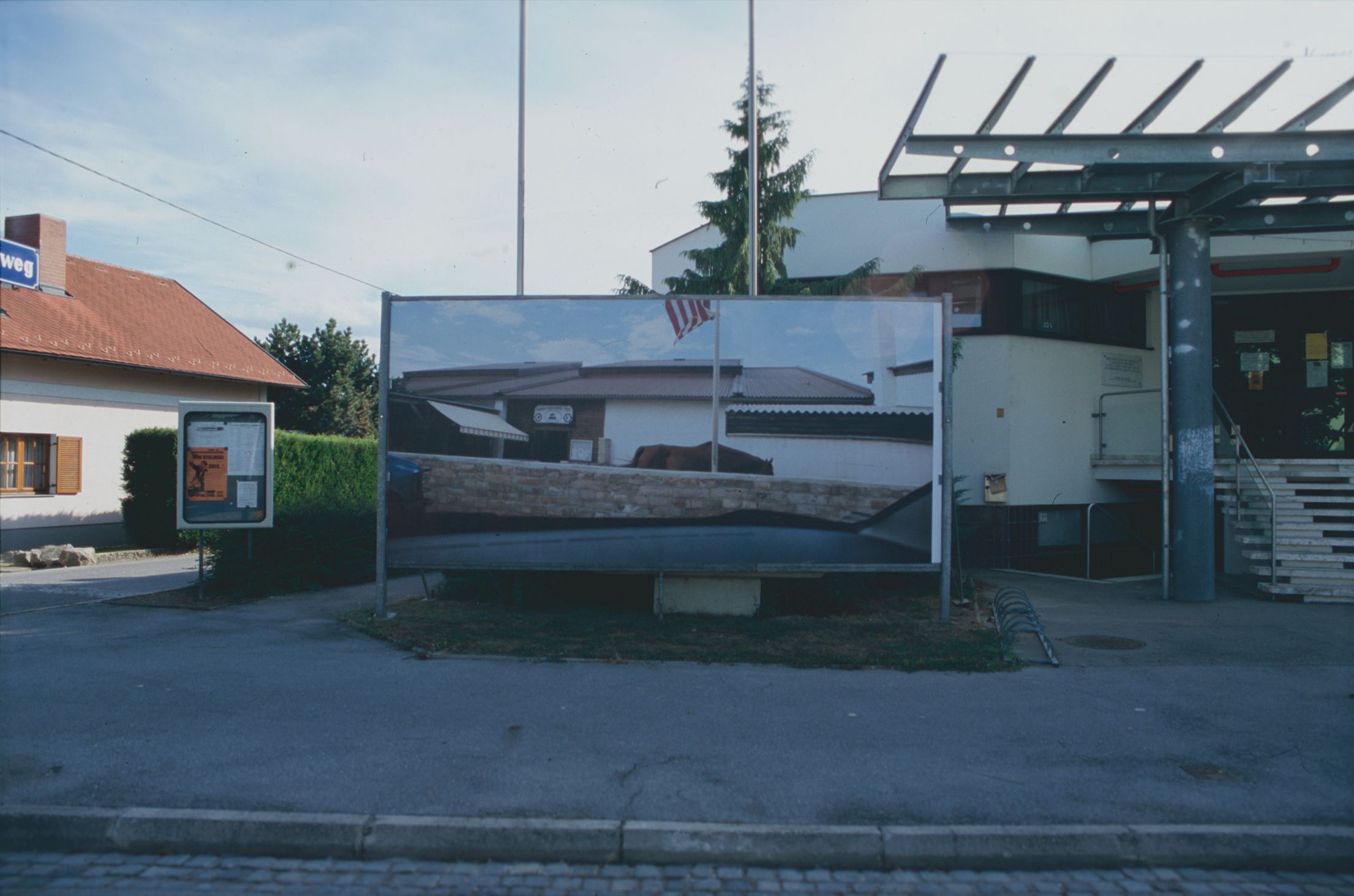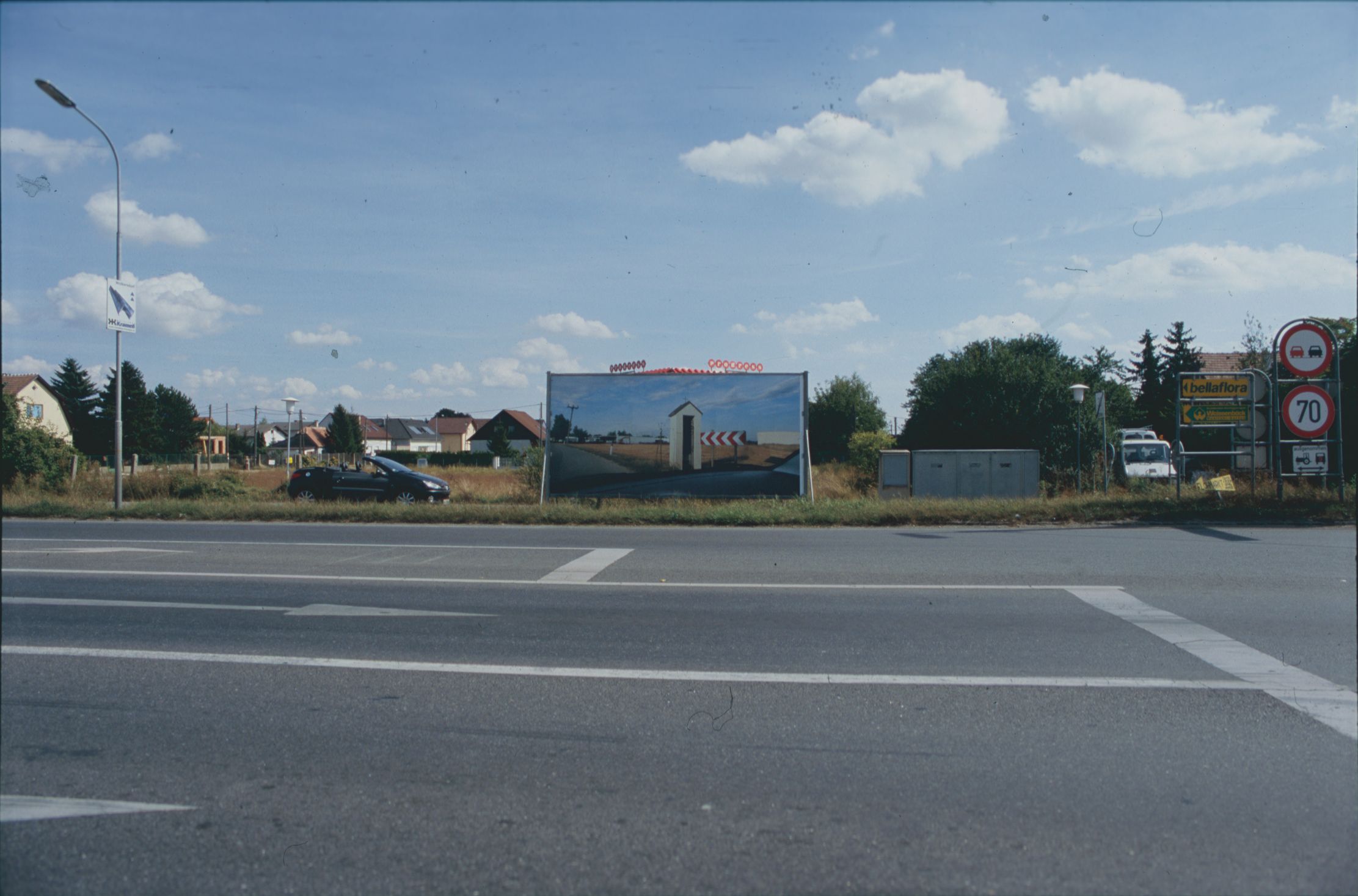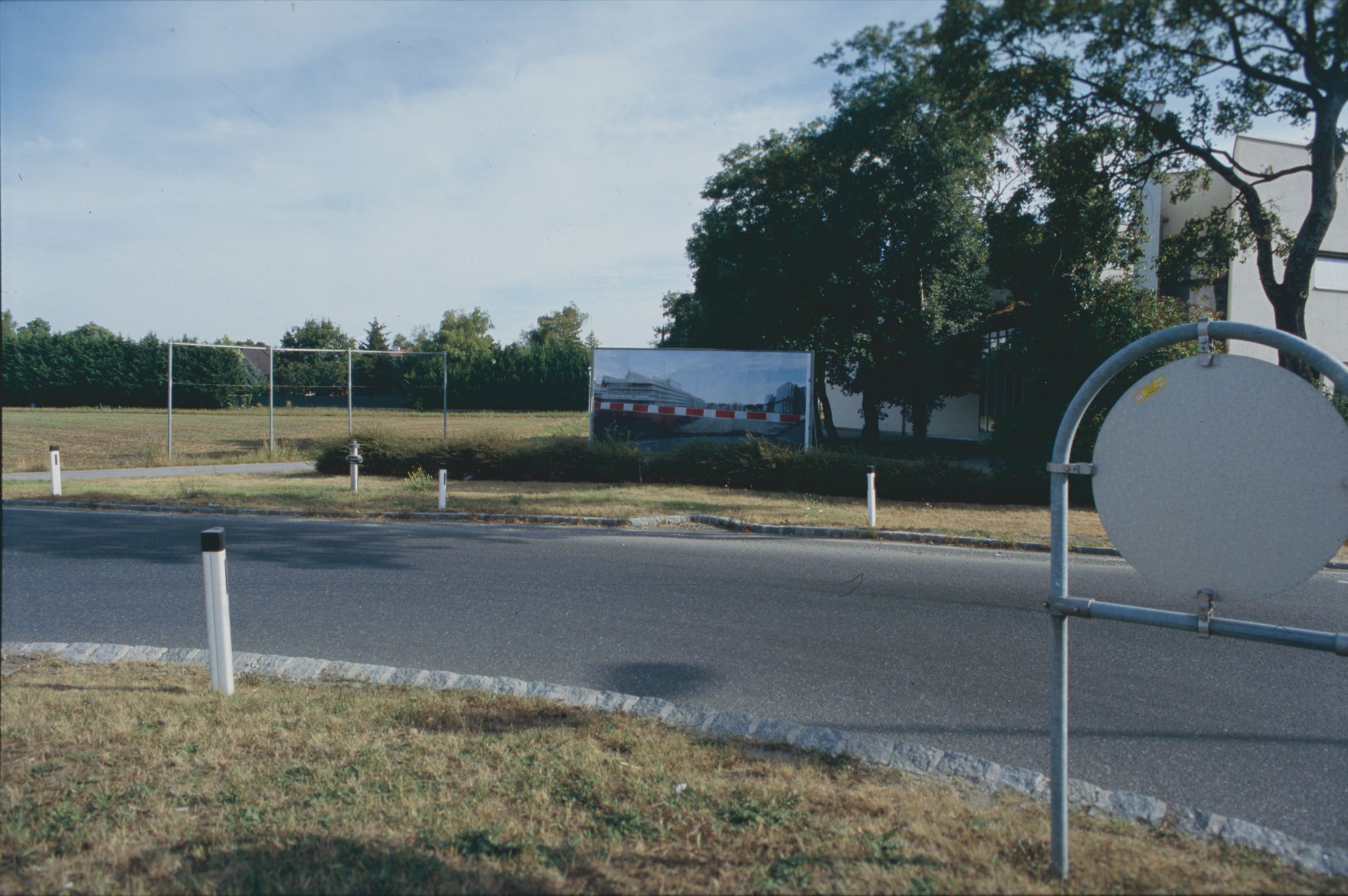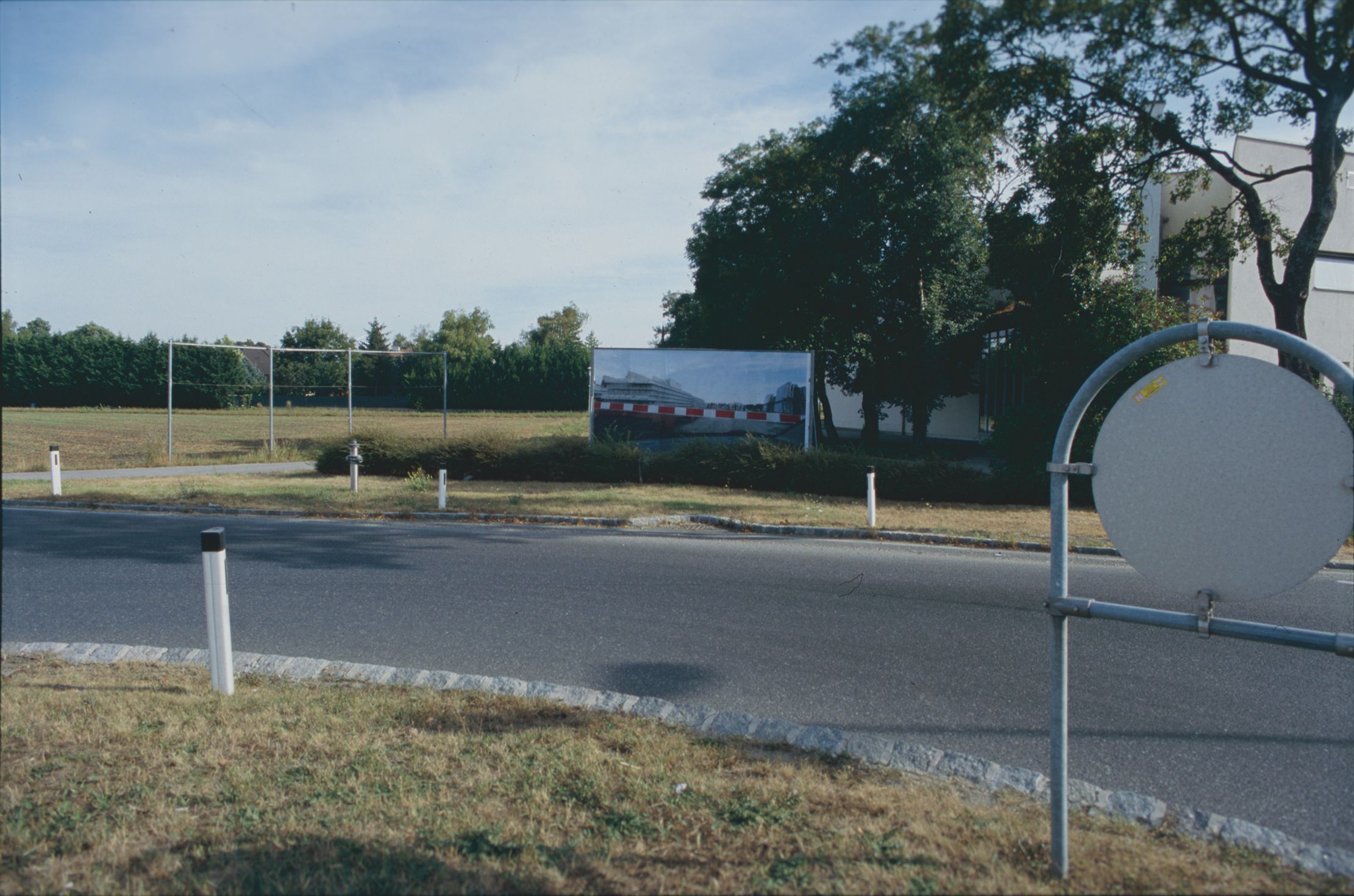Mona Hahn
:
Sichtblick (Sight-View)
Back
Information
Sight-View Fifty Years of Gerasdorf bei Wien
Mona Hahn Five Large Format Posters for the Public Space of Gerasdorf
An Interview with Mona Hahn by Susanne Neuburger
S.N.: The community of Gerasdorf decided at very short notice to include contributions by artists to the planned celebrations for the 50th anniversary of the community's founding in 2004. My first proposal, to organise a photography competition or to concentrate on photography, was met with little interest as the community had already considered holding a photography competition. In a situation where the growing numbers of ideas and projects, which included – alongside an exhibition on the culture and heritage, history and land use planning – various lectures and celebrations along with a literature symposium, frequently had little or nothing to do with the community, your photographic interventions – and the competition – concentrated strongly on the place itself. You yourself very quickly agreed to participate, even at extremely short notice, and you've experienced the balancing act that went on between the local authorities and its representatives first hand. How did you view Gerasdorf's specific situation?
M.H.: As you've mentioned, due to the very short notice involved, my first question was whether I'd be capable of doing justice to the occasion with a piece of work in the time available. This "balancing act", as you referred to it, between the various participants is where one of the key challenges to me lies in making art in public space. After all, what is completed later as an 'end product' is only partly my work. It's a collaboration between all of the participants, i.e. my work is not limited to producing a concept and ensuring its realisation with as little friction as possible. It is dependent to a degree that is not to be underestimated on how ready to, or capable I am of, addressing these structures. This can't be predicted as the units where cooperation is required are different for each project. Although, of course, experience also comes in useful here.
S.N.: You have already gained some experience – within Lower Austria – of Etsdorf, where you completed a piece of work for Zweite Runde in 2002. Was the situation a comparable one there?
M.H.: As far as my working methods were concerned, the situation in Gerasdorf was not dissimilar to the one in Etsdorf. Both were temporary art projects in public space where there was no kind of predetermined theme and the choice of location was open within the bounds of the community. This similarity was certainly useful in terms of the relatively tight schedule involved. In the design phase I was able to benefit from my experience in Etsdorf, as well as in the production and for my dealings with the firms responsible for the realisation. The conditions for the organisation in which the project was embedded were not comparable, though. In Etsdorf the project was a group undertaking with several artists that was being organised for the second time by the community of Etsdorf as a locally based culture initiative. Both the organisers and the local residents had a different approach to art in public space, one which is largely thanks to a great deal of mediation work done by the Lower Austrian state government. In Gerasdorf, by contrast, the people appeared to have had some experience with permanent artworks in public space, but had had less to do with a temporary project. This separation is significant to the extent that the first stage in the working process within a design is dependent on this distinction. The choice of location, material and to a large extent the themes being addressed, the content, are determined by this distinction. The residents of Gerasdorf's reaction showed that they had had little contact with the kind of art before that crops up somewhere in order to vanish again. In the setting-up phase for the posters, the main topic of conversation that I was confronted with was that everybody thought billboards were the domain of commercial advertising. It was surprising how much tolerance the locals showed for the situation. In some cases I had chosen central locations in the community such as, for example, a public park in the heart of Gerasdorf, where a long-term permit for commercial use with an advertising subject meant a clear encroachment of a facility usually used for social activities.
S.N.: The title Sight-View, which you coined, also provides the direction both for the photography competition as well as for your artwork. Are there sights of primary experience, and to what extent are they broken by the medium, like here by the windscreen? In retrospect I find the combination in the competition, all those photos by so many people, and your five large images, exciting. Unfortunately we don't know whether it was also noticed locally, in the individual villages around here. Did somebody here or there really look at them? Or was it more of an event on the meta-level of the whole commemorative event?
M.H.: It's true, in this case it's not clear what the relationship is between the photographs submitted and my work, as we did not communicate directly with the participants. But perhaps in contrast to you, I find it very soothing to know that the influence of my posters was not reflected in the subject chosen for the entries to the competition. Quite the opposite, I'm afraid I would have plunged into a fit of doubt if, for instance, five entries showed motifs shot through a windscreen. It doesn't bear thinking about!
S.N.: The windscreen was not just a way to question ways of looking, lens, motif, format etc. To this extent it was also a way of locating the project, as one could interpret the community driving around in a car.
M.H.: Recently, in a similar interview about a different project, I was asked about the key story or experience that led to my concept. In the example mentioned there was no such single story. From the first look around the community to the finished design, there are different paths to take in my working methods. The infamous starting anecdote tends to be rare, but in the case of Gerasdorf there actually is one. At one of the first
meetings of all the participants in a pub in Gerasdorf, to my delight I immediately found a parking space just over the road. But a good few minutes passed between manoeuvring into the space and leaving the car, and as the volume of traffic had increased significantly it had become impossible for me to open the car door. This later led to the idea of accommodating the fact that most people only seem to know Gerasdorf as a place they drive through, anyway, only seeing the place through their windscreens – and I decided to address this in my work. How symptomatic this starting story was became apparent when I began to learn the details of this community's history. As mentioned, the occasion for the invitation was Gerasdorf's 50th anniversary, before that it had belonged to Vienna and didn't have the status of a town. My personal opinion is that the independence from Vienna being celebrated and the fact that Gerasdorf is one of the most financially sound communities in Lower Austria are not to be viewed without criticism. The high volume of passing traffic is largely the result of the disproportionate amount of commercial usage of municipal property.
That's quite a high price to pay for apparent prosperity.
S.N.: I'd like to go back to your decision to hang five large format posters at key points around the town. Often towns can be very big, and individual items easily go under. Although you placed the billboards very carefully, in front of the home, on the main square and close to the roundabout, and you positioned them so obviously differently than advertisers usually do that there was no risk of their being overlooked here. What strategy did you, or do you, apply to that kind of thing?
M.H.: There might not be any prescribed content or locations, but it had already been decided to use the medium of photography before I even got involved in the planning process. As we are conducting this interview a year and a half after the completion of the project I can only describe the way I currently see the use of large posters in a context of art in public space. I wouldn't use them anymore like that today – there should be at least that much space for self-criticism! Not least the reaction of the locals in Gerasdorf led me to the conclusion that large posters cannot be separated from the context of advertising in the way they are perceived by the viewer, independent of the aesthetics employed or the subject matter – as was proven recently in Austria, in the discussion about the Euro-posters. Other projects, too, that aim to subvert the appropriation of this format in public space by the advertising industry or to highlight the phenomenon seems to me to lead to more of an appropriation of the allegedly appropriating party. I'm not going to be using large-format posters in public space as part of my artistic production anymore, until further notice.
S.N.: An early idea for the photography competition was to deliver disposable cameras to every household, but the idea was dropped because of the cost involved. The subsequent solution was to let anybody interested in participating pick-up a camera – we had about 250 of them – from the council's office. Under the motto 'Inside, Outside and Elsewhere', we tried to encourage the residents of Gerasdorf to make their own images. The theme of the competition was just supposed to be an aid, and it was clearly stated that it was fine to address just one of the categories. All types of photography were eligible for entry, in a format of 10cm x 15cm. The entries were very different …What was the route you took from the photographs, which were then on show in the big jubilee exhibition, to the game of Palmenism (aka Memory) that you oversaw?
M.H.: Fortunately, despite the short deadline even for entries there was a high level of participation in the photography competition, and the open character of the theme led to very varied choices of motif. The game of Palmenism initiated by the architect Herr Mrazek as a gift from the community for official occasions, provided us with an opportunity to procure a longer-term public presence within the community, not only for the three prize-winning photographs but also for a large number of the entries submitted.
S.N.: If the mayor actually does use the game as an official gift, as planned, then I think the whole thing was a success. Otherwise, the enthusiasm was not exactly overwhelming. That I had 'DEVIL 7' driving in front of me on the way back to Vienna after a somewhat depressing final event seemed like a twist of fate to me. I'll be keeping an eye on Gerasdorf – through my windscreen.
